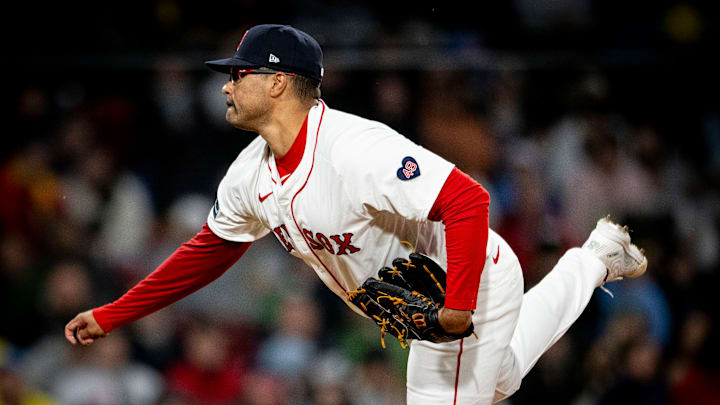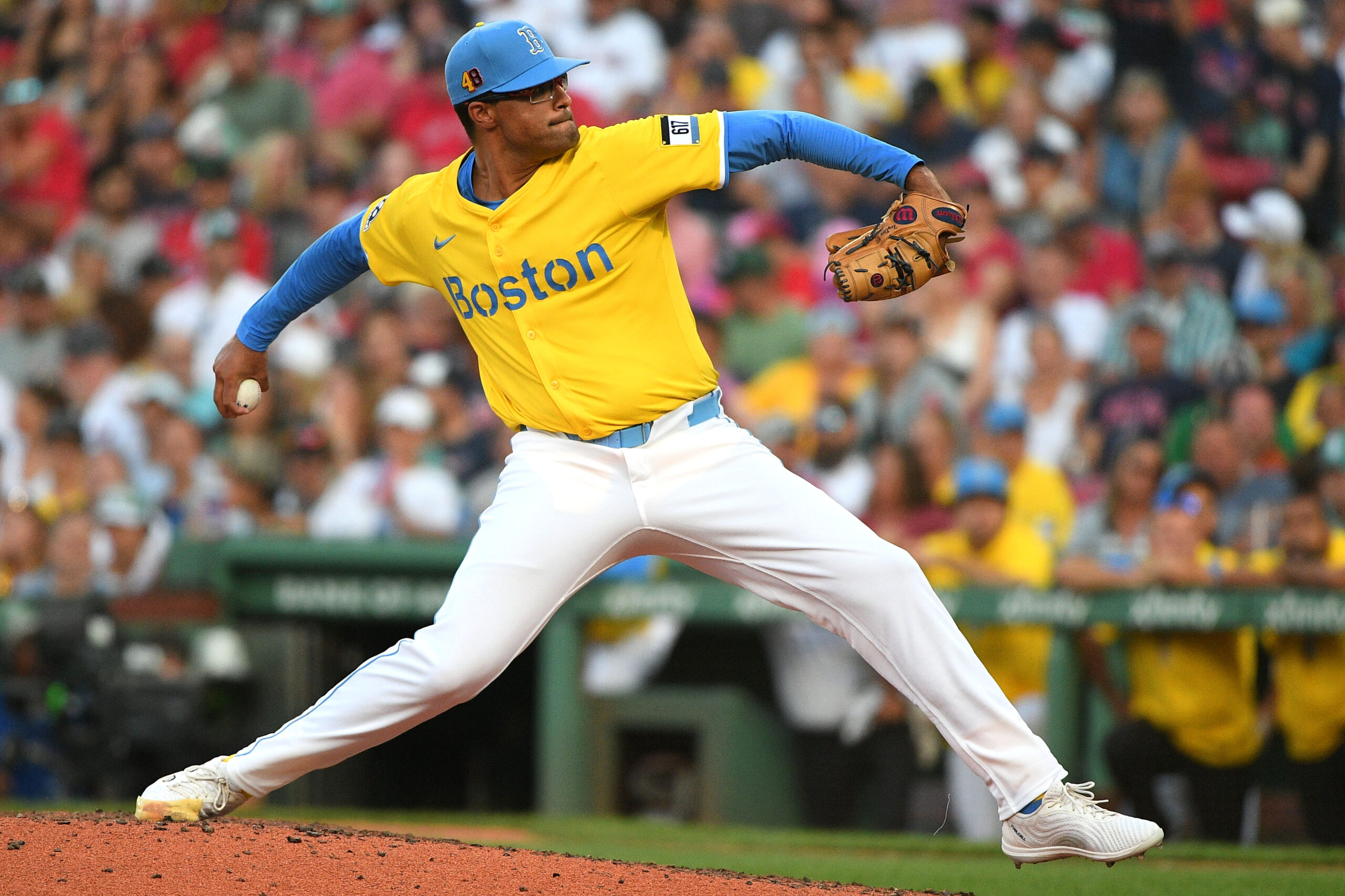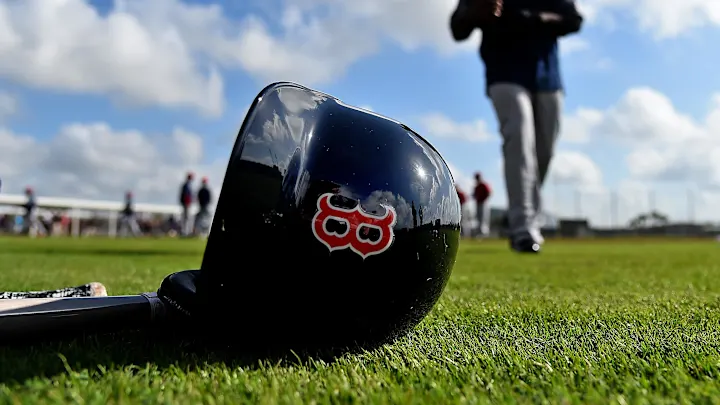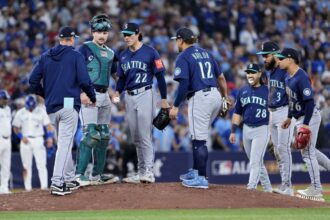As players across Major League Baseball make key decisions about their futures this offseason, the Boston Red Sox are among the teams seeing changes in the depth of their farm system. Several members of the organization have elected to test the open market, opting for minor league free agency in search of new opportunities elsewhere. One notable name among them is right-handed pitcher Isaiah Campbell, whose departure adds to a growing list of Red Sox minor leaguers moving on from the organization.
Campbell’s decision was officially recorded in his transaction log, marking the latest development in what has been a turbulent two-year stretch for the former top prospect. The Red Sox originally acquired Campbell from the Seattle Mariners following the 2023 season in exchange for infielder Luis Urías, a deal that at the time appeared to be a low-risk, high-reward move for Boston. The Red Sox saw Campbell as a controllable, major-league-ready arm capable of strengthening their bullpen.

Back in 2023, Campbell had impressed in his rookie campaign with Seattle. He posted an impressive 2.83 ERA in 23 appearances, showing the type of poise and command that made him a fast riser through the Mariners’ farm system. His mid-90s fastball and sharp slider combination made him a valuable relief weapon, and his numbers suggested that he was just scratching the surface of his potential. For the Red Sox, who had long sought more bullpen consistency, Campbell appeared to be a promising addition heading into the 2024 season.
Unfortunately, Campbell’s time in Boston was derailed by injuries and inconsistency. Throughout the 2024 campaign, he dealt with lingering health issues that limited his availability and affected his performance. Between stints in the major leagues and Triple-A Worcester, Campbell appeared in just 22 total games. In the minors, he managed to show flashes of his old form, logging a strong 2.20 ERA over 14 games. However, his success did not translate to the big leagues.

When given opportunities in the majors, Campbell struggled to find rhythm or command. He surrendered 12 earned runs across eight appearances, which inflated his ERA and made it difficult to secure a stable spot in the Red Sox bullpen. His inability to replicate the dominance he showed in Seattle led to mounting frustration on both sides, and eventually, Boston made the difficult decision to designate him for assignment (DFA).
After being removed from the 40-man roster, Campbell elected free agency, but soon found himself back with the organization. The Red Sox re-signed him to a minor league contract, a move that suggested the team still saw untapped potential in his arm despite the rough stretch. The front office hoped that a healthy offseason and another year of work with the Worcester coaching staff could help him rediscover the form that once made him one of Seattle’s more intriguing young relievers.

However, Campbell’s 2024 campaign with the Red Sox organization proved to be another uphill battle. In his brief six-game stint at the big league level, he allowed six earned runs in just 7⅔ innings, struggling with both control and consistency. His command wavered, leading to elevated pitch counts and hard contact from opposing hitters.
Meanwhile, his results in Triple-A were mixed. Although he managed to stay relatively healthy, he posted a 3.90 ERA over 43 appearances for Worcester. While those numbers weren’t disastrous, they also weren’t enough to force a return to the big leagues. His strikeout numbers dipped compared to his Seattle days, and scouts noted that his fastball lacked the late life it once had. By the end of the season, Boston had several younger bullpen arms ahead of him on the depth chart, further limiting his opportunities.

On October 16, the Red Sox made another procedural move, outrighting Campbell to Triple-A Worcester. This removed him from the 40-man roster once again, effectively ending his tenure as a rostered player in Boston. A few weeks later, on November 6, Campbell officially elected free agency, giving him the chance to explore options with other teams as the offseason got underway.
At this point, Campbell’s future remains uncertain. There is always the possibility that the Red Sox could re-sign him on another minor league deal, as they did the previous offseason. Boston’s front office has shown a willingness to bring back familiar arms who understand the organization’s system and coaching philosophy. If the Red Sox believe that Campbell can return to his Mariners form, they might extend another invitation to spring training.

However, from Campbell’s perspective, a change of scenery could be exactly what he needs. After two years of limited success at the major league level, a fresh start might offer him the opportunity to reset mentally and physically. A new organization could also provide different coaching perspectives or developmental strategies that help him unlock the potential that once made him a top-20 prospect in the Mariners’ system.
Indeed, Campbell was highly regarded during his time with Seattle. According to MLB Pipeline, he was ranked as the No. 17 prospect in the Mariners organization in 2023, recognized for his electric fastball and competitive demeanor. Drafted in the second round out of the University of Arkansas, Campbell’s college career had shown he could dominate with both command and velocity. When healthy, his combination of a mid-90s heater and a tight-breaking slider made him especially tough on right-handed batters.

That talent hasn’t disappeared—it’s simply been inconsistent. Injuries have played a significant role in derailing his progress. Since turning professional, Campbell has dealt with various arm and shoulder issues, limiting his ability to log consistent innings. Those physical setbacks not only hindered his development but also made it difficult for him to maintain mechanical consistency, leading to command issues that persisted in Boston.
Still, teams across the league are always in search of low-risk, high-upside bullpen arms, and Campbell fits that description perfectly. He’s only 27 years old, meaning there’s still time for him to regain his form. His track record from his rookie season in Seattle shows that when healthy, he can be a dependable reliever capable of handling high-leverage innings.
For the Red Sox, losing Campbell to free agency is another reminder of the fragile nature of bullpen depth. The team’s relief corps has seen constant turnover in recent years, as Boston has cycled through numerous arms in search of stability. While Campbell’s departure may not be headline-grabbing, it underscores the challenge of finding long-term contributors among relievers who often fluctuate from season to season.
The Red Sox’ decision to trade for Campbell in the first place was a calculated one. In dealing Luis Urías—a versatile infielder who never fully found his footing in Boston—the front office was betting that Campbell could develop into a controllable late-inning weapon. For a brief period, that gamble seemed promising, but the results simply didn’t align with expectations.

As Boston now looks ahead to 2025, the organization will need to reassess its pitching depth, particularly in the bullpen. The team has promising young arms coming up through the minors, but it also needs veterans who can handle the grind of a full MLB season. If Campbell does not return, the Red Sox will likely seek external options to fill his spot within the Triple-A depth chart and spring training roster.
Campbell’s situation also reflects a broader trend across baseball. Every offseason, dozens of players like him—talented but inconsistent—find themselves at a crossroads. Some rediscover their form with new teams, while others fade from the major league picture entirely. For Campbell, the next few months will be crucial in determining which path his career takes.

If another team takes a chance on him, it will likely be a minor league contract with an invitation to spring training—a standard opportunity for pitchers looking to prove themselves. His ability to generate strikeouts and induce weak contact when his stuff is sharp could make him a valuable reclamation project for a club emphasizing bullpen development.
However, if Campbell decides to return to Boston, he would do so with familiarity on his side. The Red Sox know his strengths, his work habits, and his limitations. Working once again with Worcester’s pitching staff could provide him a stable environment to refine his mechanics and regain confidence. From the team’s perspective, a return would carry minimal risk and potential reward.
Ultimately, Isaiah Campbell’s journey encapsulates the unpredictable nature of baseball careers. Once a fast-rising prospect in Seattle, he showed flashes of brilliance but struggled to maintain momentum amid injuries and transitions. His 2023 rookie campaign offered hope for a long MLB career, but the past two seasons have tested his resilience. Whether his next chapter unfolds in Boston or elsewhere, his talent remains undeniable—it’s simply a matter of finding the right fit to unlock it again.
As free agency unfolds, Campbell will have options to consider. A new organization might offer a clearer path back to the majors, while Boston could represent unfinished business. Either way, the right-hander’s decision will be closely watched by those who still believe in his upside. For the Red Sox, losing him could mean saying goodbye to an intriguing project; for Campbell, it could mark the beginning of a much-needed fresh start.
In the ever-shifting world of professional baseball, sometimes all it takes is one new opportunity to reignite a player’s career. Isaiah Campbell may not be the most prominent name on the free-agent market, but his story serves as a reminder that potential, once proven, is rarely forgotten. Whether in Boston or a new city, Campbell’s next chance could determine whether he reclaims the promise that once made him one of the Mariners’ brightest young arms—or becomes another cautionary tale of a talent unable to fully break through.





